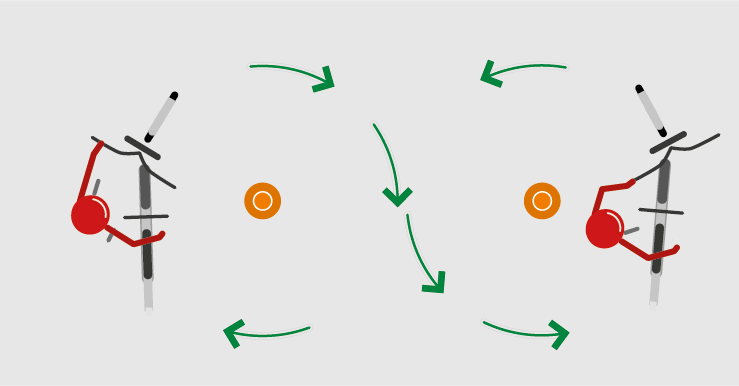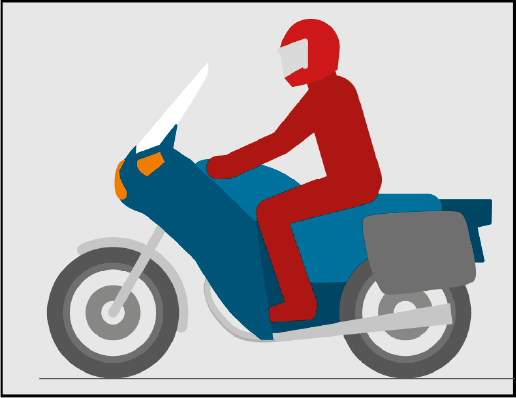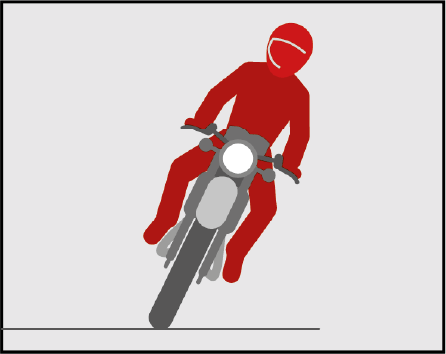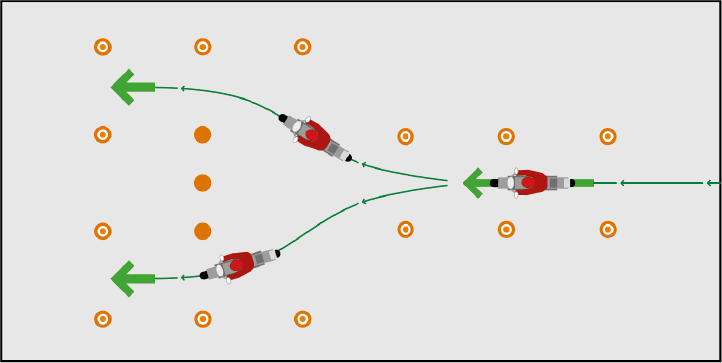motorbike
Driving school
theory book
to category A
Chapter 2: Manoeuvres in a closed training area.
Your first encounter with the motorbike will be in a closed practice area. The aim is to get a feel for the "body" of the motorbike. This chapter tells you a little about what you can look forward to.
You need to learn how to perform a series of manoeuvres. Either with the engine off or at low speed. When you can perform the manoeuvres flawlessly at least 2 times in a row, you have learned them properly. Some of the manoeuvres are performed with your instructor in the back seat.
Some need many hours on the training ground, others do it faster. On average, it takes 3-5 hours. The important thing is that when you're done here, you're safe enough to face the rest of the traffic. Because when you're out in traffic, you have other things to think about, such as road conditions, traffic rules and whether you're helping to keep traffic flowing smoothly. Chapter 4, "Manoeuvres on the road", prepares you for what you will learn in traffic. First, make sure your motorbike is ready to ride. Check that the mirrors, lights and foot rests are clean so that they don't cause accidents. At the same time, make sure there are no loose parts that could interfere with driving.
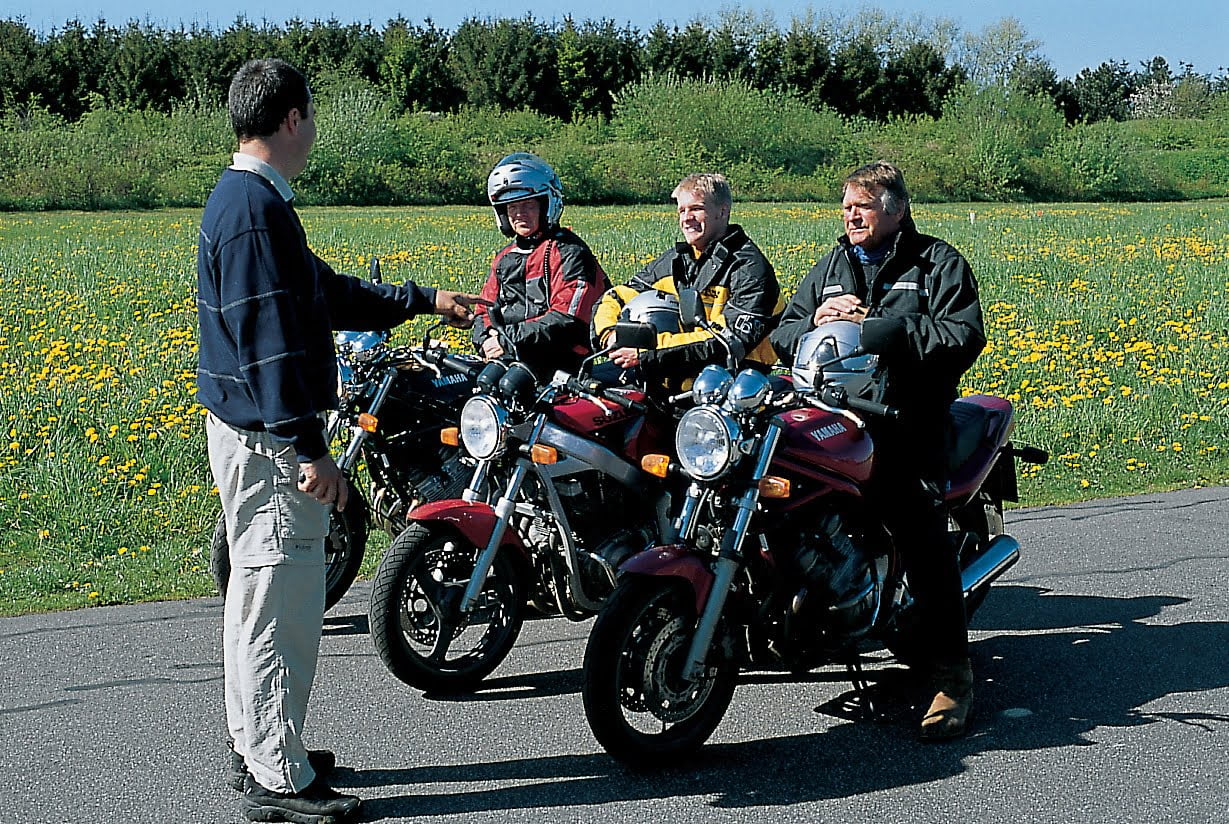
EU exercise 1
EU exercise 2
Checklist
The following list is a summary of the exercises that your instructor will practise with you in practice. By the time you finish the exercises on the practice ground, you should have mastered every single one of them. They get progressively more difficult, so it's most natural to learn them in this order:
1) You need to get a feel for the motorcycle's weight and centre of gravity. This is done by doing some exercises while standing next to the motorbike and pulling it around in circles. At the same time, you practise using the handbrake. The same exercise teaches you how to use the stabilisers.
2) You need to learn how to get on and off the motorbike. In addition, you need to find the right seating position. When you are seated correctly, you can reach all the controls without changing
position. You keep your head up. Your back and shoulders are relaxed and your knees are against the petrol tank. During this exercise, you'll also learn how to adjust mirrors, identify their blind spots and something about your helmet's weak points. Finally, you'll learn how to use the brakes, clutch, gear pedal and throttle while the engine is switched off.
3) You need to learn how to start and stop the engine. Your instructor will explain what to do. Then you need to learn how to shift gears and find the clutch point. Do these exercises several times.
4) You need to learn how to start gently and stop on a level road. You need to be able to use both brakes.
5) If possible, you should also learn to start gently and stop on an incline.
6) You need to be able to drive slowly straight ahead. It's actually very difficult to drive very slowly. You need to master this exercise in order to learn the following exercises.
7) Once you're confident driving straight ahead, learn to drive in larger and smaller circles.
8) Once you're familiar with the circles, learn to drive in eights of different sizes.
9) You need to learn how to start and stop in a circular track. Here you can practise body lean on the motorbike. You will also learn that you must not brake and steer
at the same time.
10) You need to learn how to make a U-turn. At the same time, you can practise orienting yourself and signalling. On the stretches between U-turns, you can practise changing gears.
11) You need to learn how to drive slightly faster in a circle while leaning correctly towards the centre. You need to be able to go both left and right.
12) You need to learn how to slalom between cones. The distance between the cones should get smaller and smaller. When you are confident, your instructor should come along as a passenger.
13) You need to learn how to use the motorbike's two brakes. Your instructor will show you different exercises. It is important that you get a feel for braking. If you accidentally block a wheel, there is a high risk of tipping over. Again, your instructor should accompany you as a passenger.
15) Finally, learn right turns with and without stopping. You'll practise orientating yourself, turning your head correctly and signalling at the same time.
You can use the list as a checklist when you arrive at the practice site. Make sure you try all the manoeuvres. Once you've gone through all the manoeuvres, you should have a sense of what it means to be a motorcyclist.
